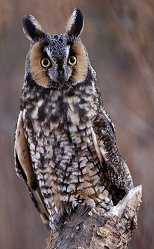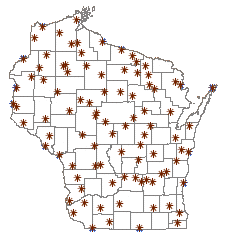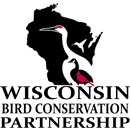
Background / Purpose
No fewer than five owl species regularly breed in Wisconsin and the western Great Lakes, yet their nocturnal habits, sparse distributions, and relatively early nesting periods have precluded adequate monitoring of their populations by existing surveys. Recognizing this gap, the Wisconsin Bird Conservation Partnership (WBCP) and Minnesota's Hawk Ridge Bird Observatory (HRBO) teamed up in 2005 to initiate a volunteer-based, roadside survey that aims to assess the status, distribution, trends, and habitat associations of owl populations in the region. This large-scale, long-term survey provides information like no others and will ultimately play a critical role in the sound management and conservation of owls throughout the western Great Lakes.
What participants can expect
The Western Great Lakes Owl Survey follows nationally-standardized protocols and asks volunteers to conduct two roadside surveys of an assigned route after dark, the first in early April and the second in late April or early May. Wisconsin hosts more than 90 survey routes statewide, each consisting of 10 stations spaced one mile apart. Observers record all owls detected during a five-minute listening period at each station, and the entire survey is typically completed in ~ two hours (see here for details on protocol). The most common owls are Great Horned, Barred, and Northern Saw-whet Owl, while other fun critters like American Woodcock, Wilson's Snipe, Ruffed Grouse, coyotes, and frogs are frequently encountered.

Long-eared Owl © Dennis Malueg

Owl enthusiasts of any skill level are welcome. All volunteers are provided online training opportunities and must pass a brief certification test to ensure accurate data collection. Routes are assigned on a first-come, first-serve basis. so be sure to view the map of routes. Keep in mind that the Wisconsin Nightjar Survey uses identical routes and similar protocols so you may consider participating in both surveys.
For more information, contact survey coordinator Ryan Brady, Wisconsin DNR, at [email protected] or 715-685-8585.
Monitoring Reports
2014 (874 KB)
2013 (936 KB)
2012 (750 KB)
2011 (717 KB)
2010 (1.1 MB)
2009 (1.3 MB)
2008 (1.6 MB)
2007 (820 KB)
2006 (1.6 MB)
2005 (118 KB)
Results
Read annual reports from previous years at the links to the right. In 2014, 57 volunteers surveyed 69 routes throughout Wisconsin and detected 139 owls of five species. The overall mean number of owls per route was 2.01 and very near the average of the past six years. Numbers of most species were similar to previous years, with exception of a small spike in N. Saw-whet Owls. Regional owl monitoring efforts continue to grow across Minnesota, Wisconsin, Michigan, Illinois and other other Midwest states. An increased focus on rare species is expected in the years ahead. Check out the 2014 annual report for preliminary data on population trends and future recommendations for this survey.
Additional Owl Survey Links
Hawk Ridge Bird Observatory - Spring Owl Surveying
Bird Studies Canada - Nocturnal Owl Monitoring
Guidelines for Nocturnal Owl Monitoring in North America
Maine Owl Monitoring Program
Pennsylvania Breeding Bird Atlas Owl Survey Protocols
Monitoring of Owls and Nightjars (MOON) in Illinois
Michigan Owl Survey
